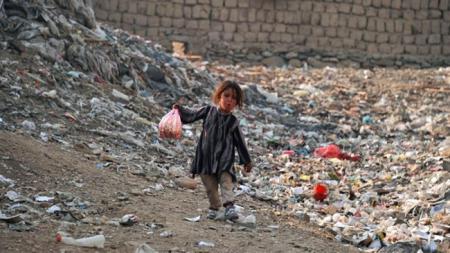
In view of this, "the road to 2030 will not be easy because economic growth alone will not be sufficient to help those remaining in extreme poverty to move out," warns the document prepared for the 2017 High-Level Political Forum on Sustainable Development which kicked off on July 19 and concludes on July 19 after the three-day ministerial meeting, indepthnews.net reported.
The warning is significant particularly as the Agenda for Sustainable Development highlights the strong commitment of UN Member States and the international community to ending poverty in all its forms and dimensions, including by eradicating extreme poverty. The 17 Sustainable Development Goals (SDGs) of the Agenda — adopted by world leaders in September 2015 at an historic UN Summit — officially came into force on January 2016.
The document, titled '2017 HLPF Thematic Review of SDG 1: End Poverty in All its Forms Everywhere' noted that poverty reduction has been ‘deeply uneven between regions and countries’ and that poverty today is ‘predominantly rural’. 80 percent of the extreme poor live in rural areas; 65 percent work in agriculture.
Besides, children are more likely to be poor than adults: Around half of those living in extremely poor households are under the age of 18. As such, child poverty threatens not only the individual child, but is likely to be passed on to future generations, creating and sustaining intergenerational cycles of poverty. About two thirds of children in sub-Saharan Africa are deprived in two or more dimensions critical to survival and development, warns the document.
"Moreover, some 76.5 million children are living in relative poverty in the world’s richest countries, showing that poverty remains a universal issue of global importance. Children, youth, women, people with disabilities, people living with HIV/AIDS, older persons, indigenous peoples, refugees and internally displaced persons, migrants and ethnic and linguistic minorities are disproportionally affected by poverty."
Highlighting yet another important aspect, the document said: While there have been impressive gains in reducing global extreme poverty over the last three decades, 1.6 billion people still live in "multidimensional poverty."
According to the document, it is becoming even more difficult to reach those remaining in extreme poverty, who often live in fragile contexts and remote areas. Access to adequate education, healthcare, electricity, safe drinking water and other critical services remains elusive for many people, often determined by socioeconomic status, gender, age, race, ethnicity, migratory status, disability and geographic location.
Moreover, for those who have been able to climb out of poverty, progress is often temporary: Persistent economic slowdown, food insecurity and climate change threaten to rob them of their hard-won gains and force them back into cycle of poverty.
"Decent work remains one of the best routes to get out and stay out of poverty," notes the document.
"Yet, the global economy has not managed to create a sufficient number of decent jobs to meet labor market demands. Every year the global labor market grows by roughly 50 million people, with the majority of increases in developing countries."
Creating jobs for the expanding labor force is an important challenge, given that 201 million people are currently unemployed and 783 million more are working but unable to lift themselves and their families above the moderate poverty threshold of US$3.10 per day (the ‘working poor’. Current estimates indicate that working poverty rates will decline between 2017 and 2018, but at a slower pace than in the previous 25 years.
One category of people are those who live in ‘pockets’ of extreme poverty — left behind due to market and/or governance failure; exclusion or discrimination. The vast majority in this category live in middle income countries with high average rates of progress. Many live in remote communities, largely disconnected from society or belong to marginalized groups facing multiple, compounding sources of social and economic discrimination.
Another group of people are those living in particularly poor countries, which have been, thus far, largely cut off from reaping the benefits of globalization. An analysis identified 24 countries with both a high prevalence of extreme poverty and a poor track record of poverty reduction. 265 million people live in extreme poverty in these 24 countries. Without strong partnerships, adequate and effective development cooperation, they face a high risk of being left behind, declares the UN document.
